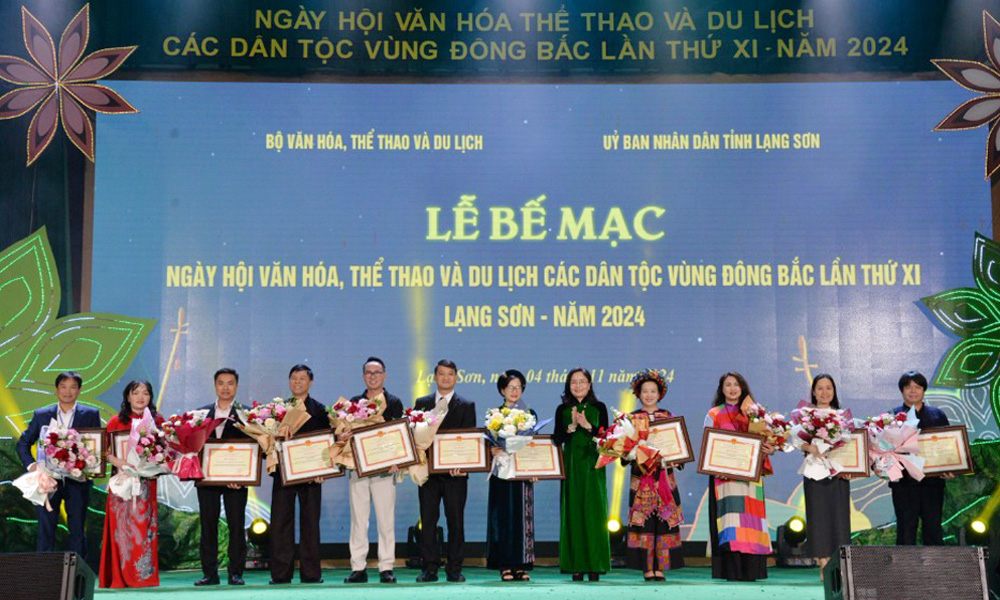Searching for ancient traces at Bat Nha Pagoda
This place has a close connection with the holy land of Truc Lam Yen Tu, so it contains many treasures and fairy tales. Binh Long Pagoda (also known as Bat Nha Pagoda) in Huyen Son commune (Luc Nam district, Bac Giang province) is one of the relic sites where the Vietnam National Museum of History has coordinated with the Bac Giang cultural sector to conduct an archaeological excavation and discovered many important documents and artifacts. There are still unsolved mysteries here.
Going up to the mountain to find sediments
Over the past month, nearly 20 officials and experts from the Vietnam National Museum of History, the Bac Giang provincial Museum and local people have made great efforts to complete an archaeological excavation at the ruins of Bat Nha Pagoda.
 |
|
The way to Bat Nha Pagoda. |
There are many documents about Bat Nha Pagoda. The pagoda is located on Bat Nha Mountain, named by the Buddhist monks here. The pagoda was believed to originate in the Ly - Tran Dynasties. Bat Nha is a concept of Buddhism, meaning the endless understanding to bring human beings out seas of hardships.
With the evolvement of the universe, due to the scythe of time and historical events, many Buddhist temples are now just ruins, of which Ho Bac, Bat Nha, and Ma Yen Pagodas are examples.
Famous relic site on Luc River - Huyen Mountain
At the archaeological site, Nguyen Ngoc Chat from the Vietnam National Museum of History, who leads the excavation team, said: “Many excavations have been done, but nowhere is as special and memorable as at Bat Nha Pagoda. For a straight month, I and other members of the excavation team have lived on the mountain in the absence of electricity and phone signals, and not yet returned to Hanoi.
According to the initial assessment of Chat, on an excavation area of about 170sq.m, the team discovered the foundation of the two-hall architecture (front hall and main hall). There is also the foundation of a kitchen with burnt earth stains and artifacts such as dishes and household utensils.
Opposite the kitchen is a monk’s room. The pagoda looks to the northwest and sits at an altitude of nearly 350m above sea level. Notably, the ancient documents all say that Bat Nha Pagoda dates back to the Tran Dynasty, but through the excavation, the vestiges of this dynasty are quite faint but the most clearly are those of the Le Trung Hung period (17th century) and the Nguyen Dynasty (19th century) with two clear ground layers.
However, archaeologists said that it was impossible for the pagoda to be built by the 17th century, since there were older relics before that time. If the excavation can be expanded, it is likely the traces of the Tran Dynasty will be discovered.
Chat said that surprisingly, many large stone bases of columns were unearthed, but for many days, no terracotta materials were found.
 |
|
Artifacts decorated with dark gray dragons were found at the excavation site. |
Here archaeologists have also found a rock with many circular holes. They believed that it might be a tool to create fire of the ancient people. Some pieces of pottery from the Tran Dynasty were discovered and most of the remaining are ceramics and crockery dating back to the 17th century.
According to Nguyen Si Cam, this archaeological excavation is the basis for researching and assessing the historical-cultural value of the relic site, and at the same time clarifying its relationship in the pagoda and tower system during the Ly - Tran period in the locality, serving the collection of documents for the preparation of a scientific dossier of the Yen Tu relic and landscape complex (in Quang Ninh, Bac Giang, Hai Duong provinces) to submit to UNESCO for recognition as a world heritage site.
The province has planned to restore and embellish relic sites to form an architectural complex of Truc Lam Yen Tu Zen sect, meeting people’s needs for cultural and spiritual activities, contributing to creating a tourism highlight in the locality. It is expected that in the area of Bat Nha Pagoda, a wooden pagoda will be restored, while the ancient pagoda’s foundation will be preserved as an outdoor museum.
 Bắc giang
Bắc giang













Reader's comments (0)